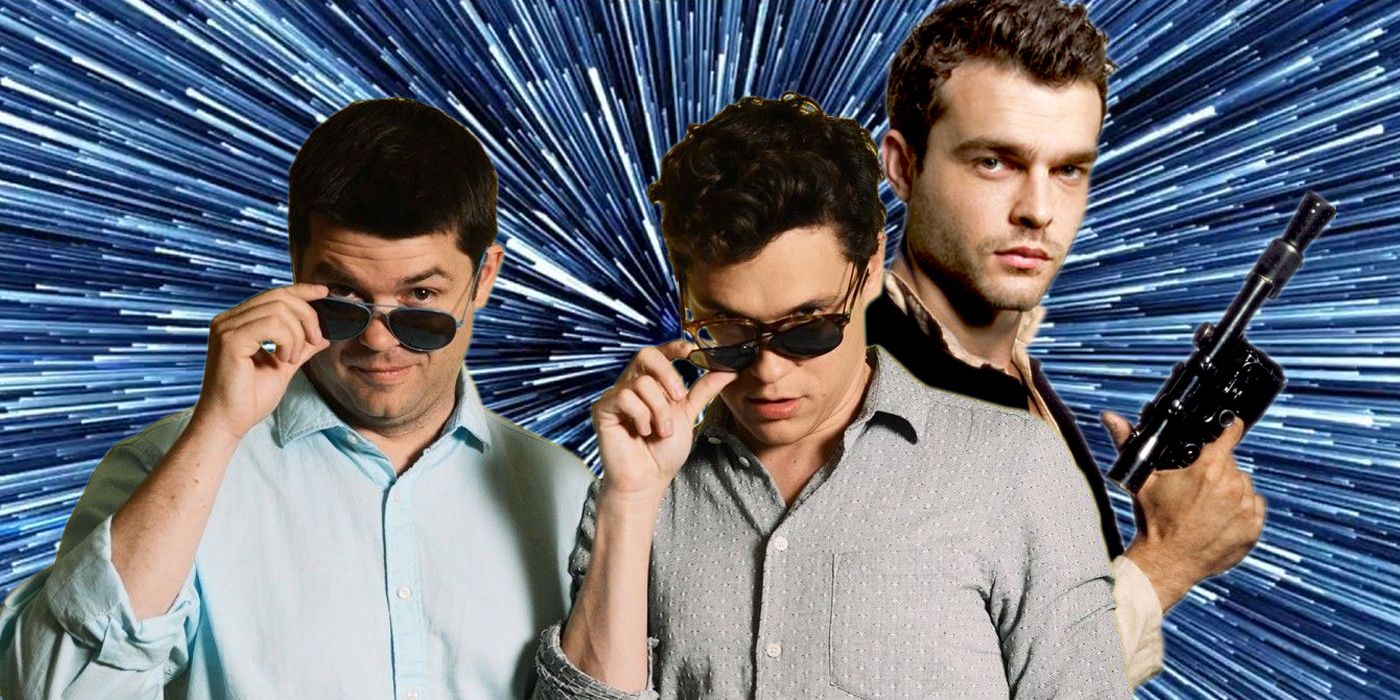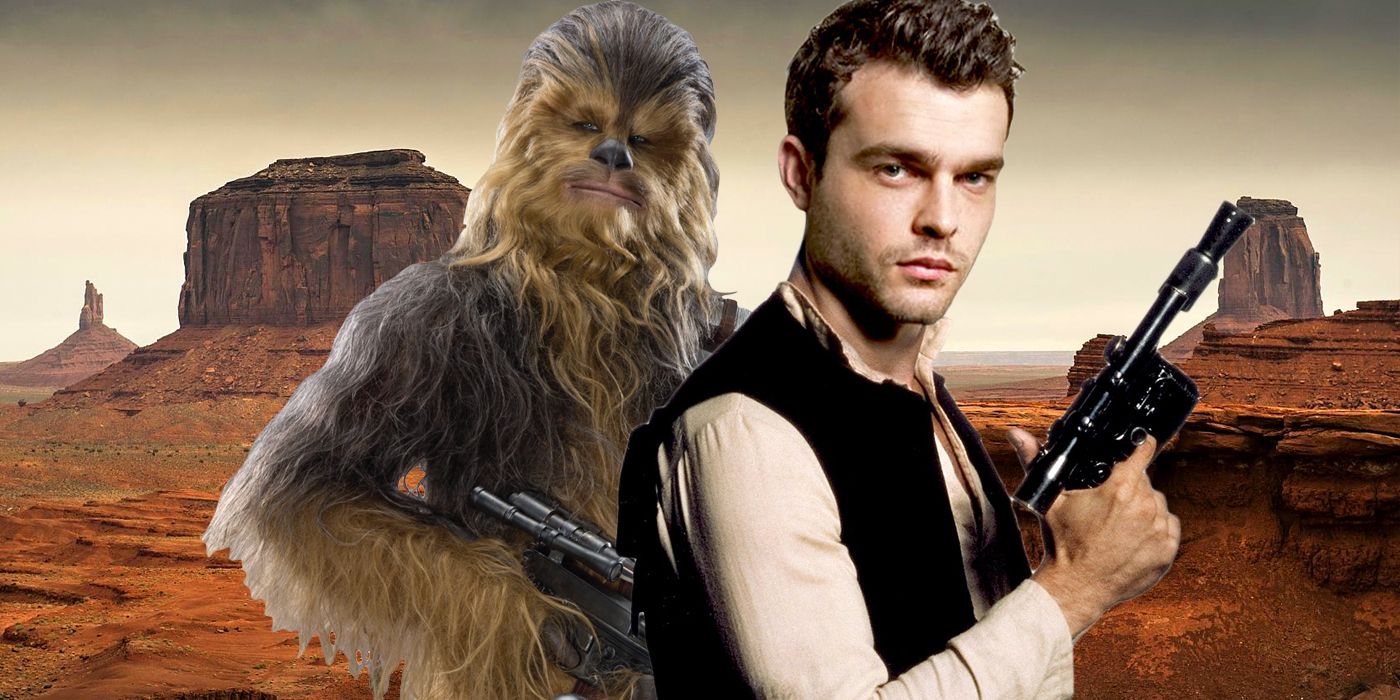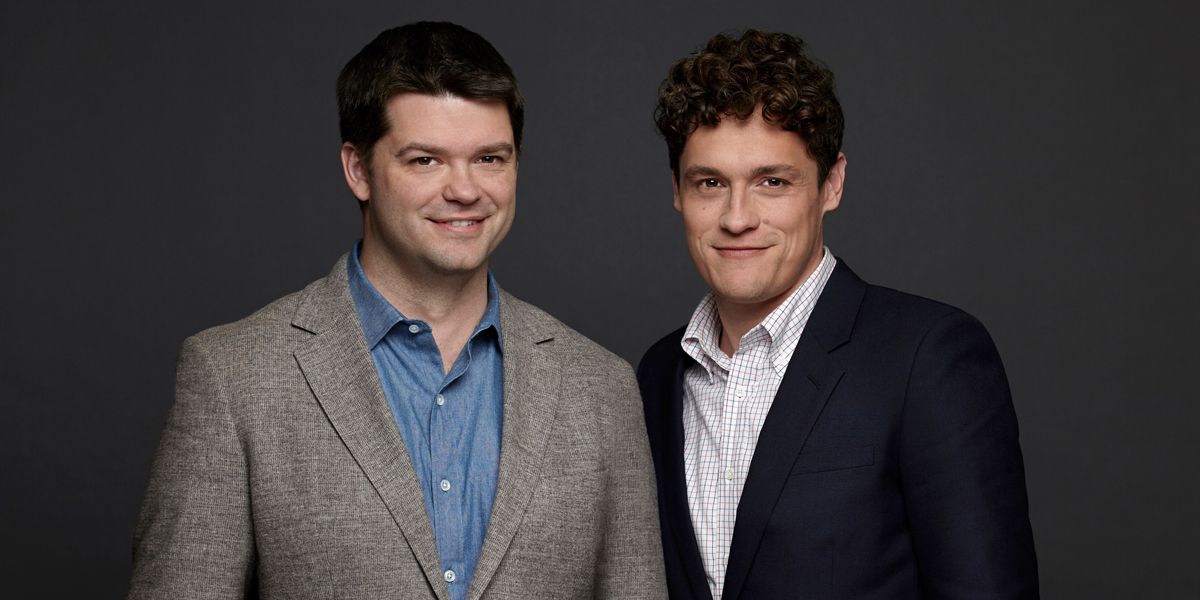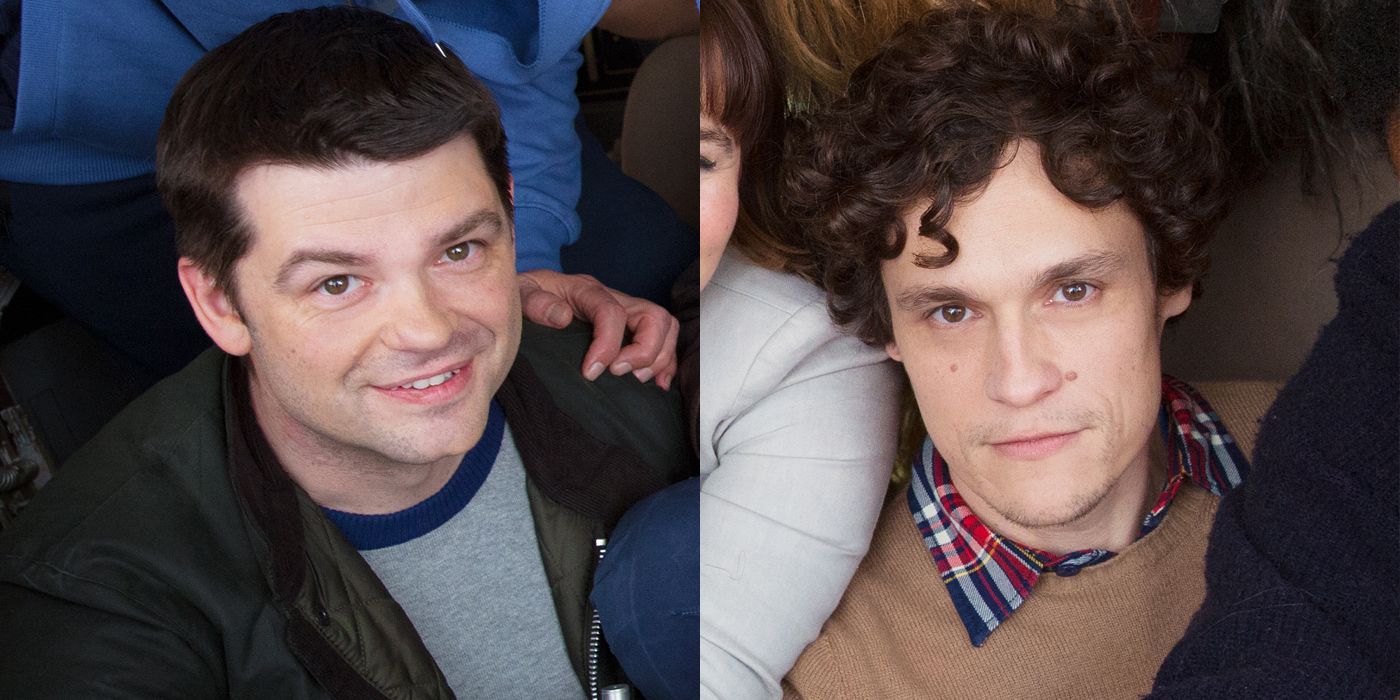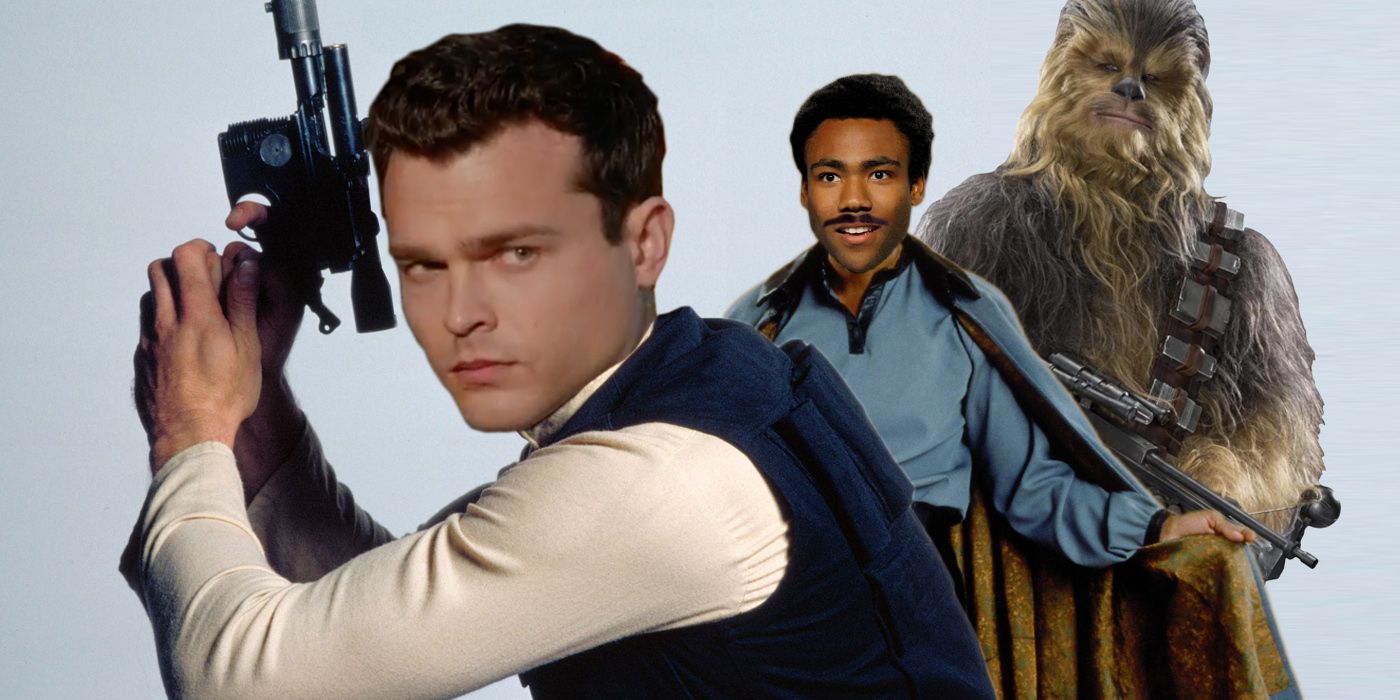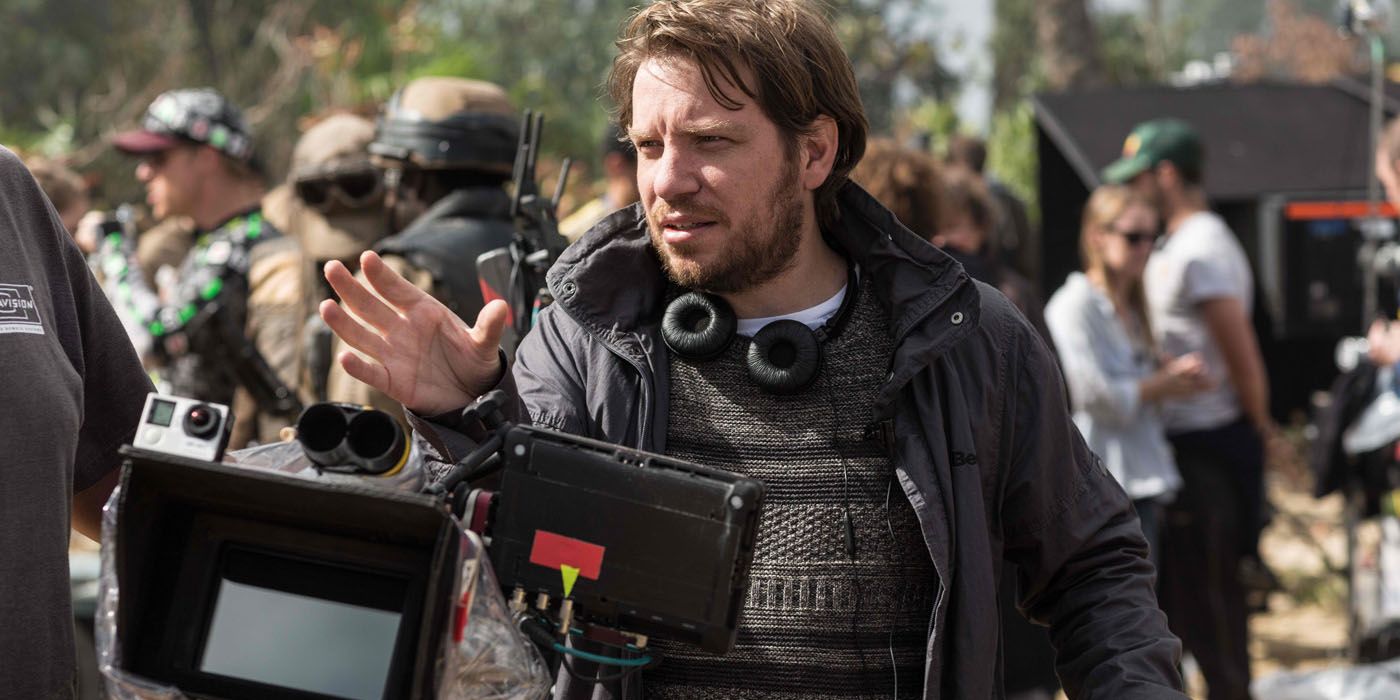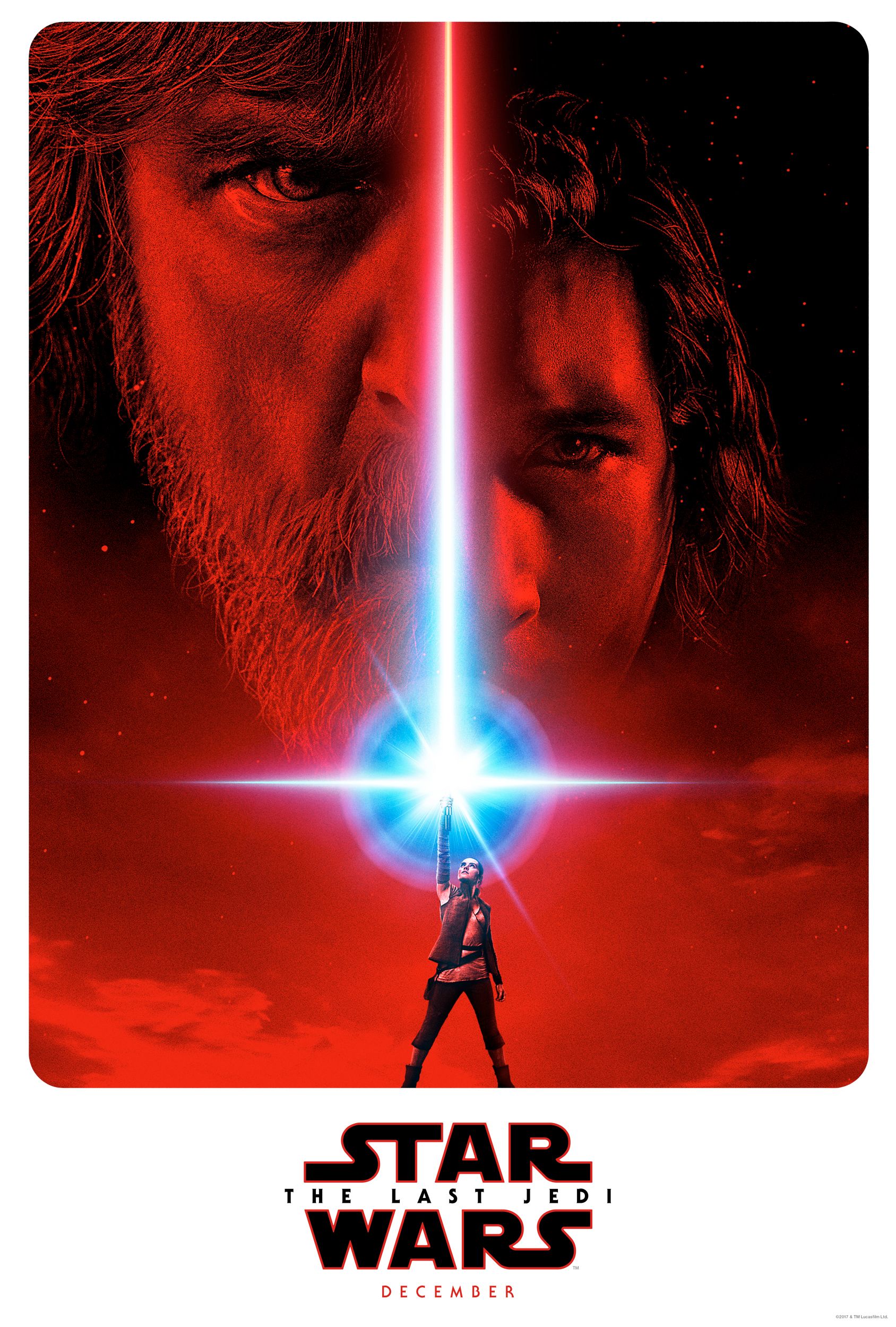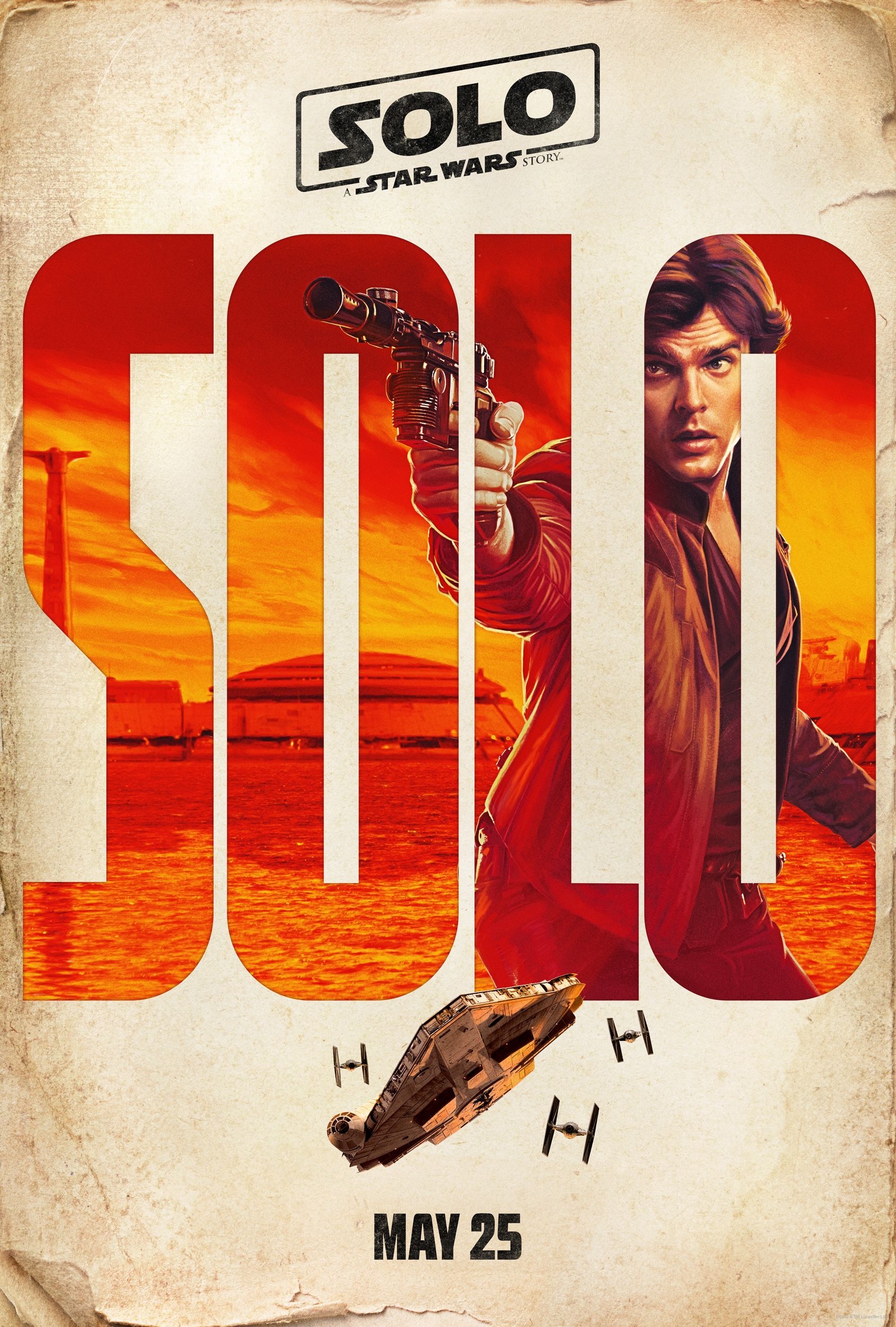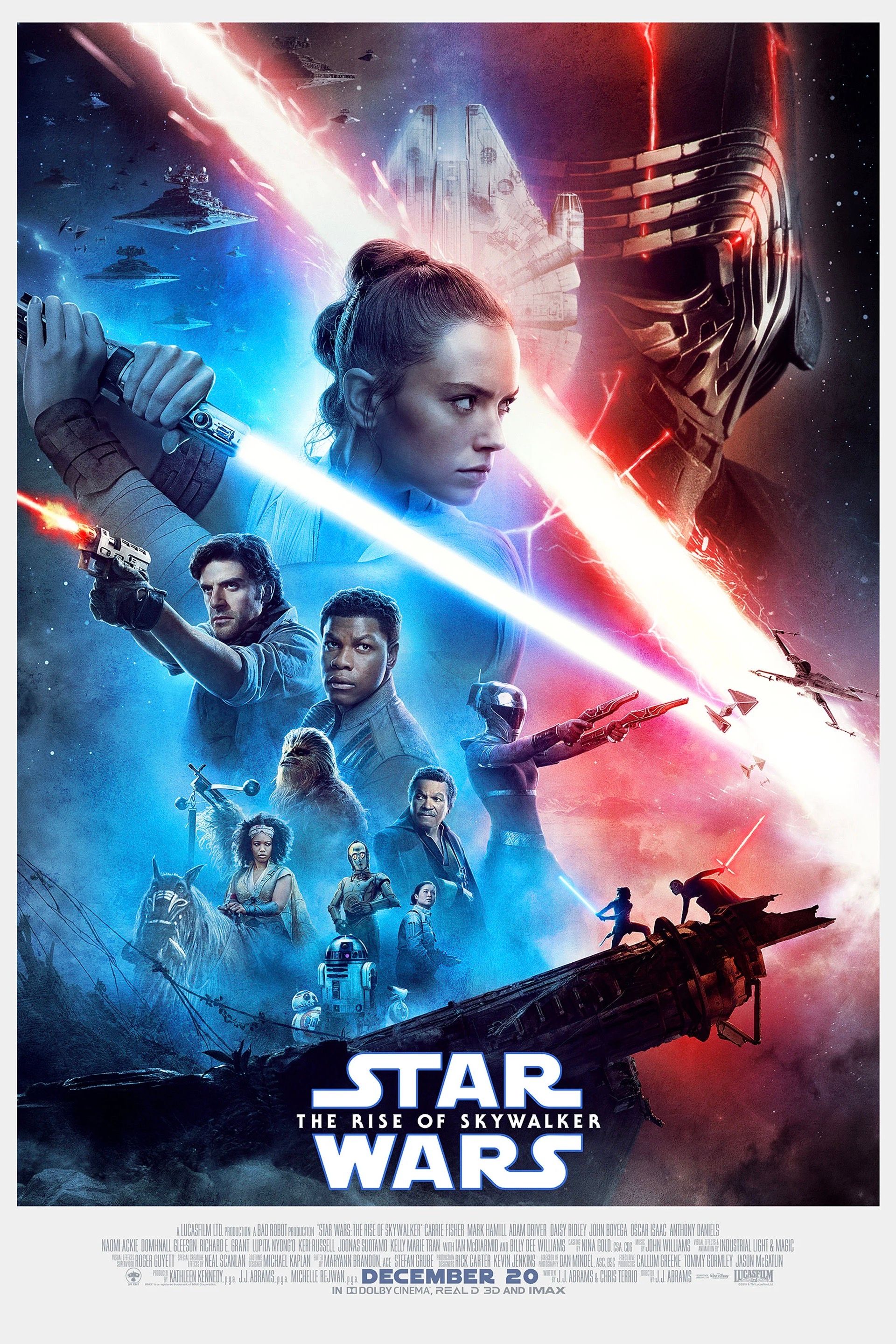Following the firing of directors Phil Lord and Chris Miller and their subsequent replacement by Ron Howard, things are looking somewhat stable on the Han Solo standalone movie. Production has resumed under the new, social media savvy director and while there was no presence from the film at D23 or SDCC, the studio line is that things are continuing fine, thank you very much. That hasn't stopped repeated questions about Kathleen Kennedy's decision to fire The LEGO Movie filmmakers though, specifically about why she decided to do something so seismic right in the middle of principal production.
Well, we may have the reason, which lies in rules laid down by the Director's Guild of America. The DGA has been brought into the discussion several times in reference to Lord and Miller's firing, initially to debunk suggestions Lawrence Kasdan - a writer and producer on the film - could step into direct and, once Howard was locked, in reference to whether the original duo will get a credit on the film or if they have rights to a director's cut. All of these, of course, are forward thinking and mainly related to the movie's release. However, looking back over the fracas, the same Guild statutes appear to also contain the reason why Lord and Miller's firing was so odd in the first place.
Why Did It Take So Long For The Han Solo Problems To Be Addressed?
A month out from the major shakeup, a clear picture of what went wrong has now emerged. In fact, given the level of secrecy that's surrounded every production under the Disney Star Wars banner, we actually know more intricate details about Solo than any other film.
There were a lot of factors at play, but the rift that led to Lord and Miller's firing came from a fundamental difference in opinion over the project's macro direction: both in how they viewed the young Han Solo character (the studio wanted something in-line with Harrison Ford's portrayal, the directors something more comedic) and the general filmmaking approach (while Lord and Miller would get the required dialogue, they spent equal-if-not-more time having the actors improvising and overall freewheeling the shoot). This self-deprecating, randomized approached worked fine for them on 21 Jump Street but clashed with the Lucasfilm ideal.
The cracks appear to have blown open when Alden Ehrenreich was assigned an acting coach mid-production as a result of a performance likened to Ace Ventura, leading to him raising serious concerns about the direction he'd been given. Things swiftly fell apart when Kennedy reviewed the assembled footage and, having already reportedly disagreed with the directors, tried to bring her foot down; the film's editor was changed and Kasdan was introduced as an overseer. This was near identical to what happened on Rogue One, with Tony Gilroy taking over (albeit uncredited) for the reshoots and edit; the only difference on this Story was that it happened earlier on in the process. When Lord and Miller made clear they refused to play ball they were ousted, replaced swiftly by Howard.
Why this major creative difference wasn't highlighted in the years leading up to principal photography - the directors had been attached since 2015 - is still a major question regarding the project; how can you go through one of the biggest casting calls of all time yet have not decided on what exactly you want the character to be? However, that query is generally superseded by the fact things then got this far before anything was done. It appears by most accounts the established directors were gifted some degree of creative freedom with the understanding they'd play within franchise confines like Rian Johnson on The Last Jedi; something they didn't follow.
But while that may explain it taking months for problems to be discovered, it still doesn't get us to the why of the rash move to simply get rid of Lord and Miller with three weeks to go. From the outside, surely the logical decision for a producer would be to get principal photography in the can then reassess from what was there? That way the air is clear, all parties can finally be on something approaching the same page and a power shift a la Edwards/Gilroy can be better presented and discussed.
Well, actually, no. If Kathleen Kennedy had kept Lord and Miller on the project even a week longer then she could have found herself a lame-duck producer, with the filmmakers gifted full creative freedom and protection from the DGA. Yes, this is about to get complicated.
Page 2: [valnet-url-page page=2 paginated=0 text='DGA%20Rule%207-503%20-%20The%20Reason%20Lord%20and%20Miller%20Were%20Fired']
DGA Rule 7-503 - The Reason Lord and Miller Were Fired
Briefly, the DGA is the union guild for directors working in Hollywood across film and TV, of which nearly every professional is a member - including Lord, Miller, and Howard. Practically it operates like any other union, but due to the way Hollywood is constructed this gives them a lot of power; they have deals with all the major studios that only members can direct motion pictures - so no random producer-plucked stooge - and have a defining say on credits. Most of the time, this (as well as their annual awards, which serve as an Oscar barometer) is where the public acknowledgment of the group ends.
Star Wars actually has a complicated history with the DGA due to Lucas' refusal to have opening credits on Star Wars and The Empire Strikes Back, which led to a hefty fine and him quitting the group; something that in turn made finding a filmmaker for Return of the Jedi especially complicated. The DGA seems to have had a major influence again on Han Solo, albeit for a different reason.
If you look in the DGA's current Creative Rights Handbook, which is readily available on the organization's website, you can see the full list of creative rights afforded to a director. Within this is Section 7-503, which discusses explicitly the limits on replacing a director mid-production and the rights afforded to them. Here are the relevant quotes:
"A Director who is replaced after directing ninety percent (90%) but less than one hundred percent (100%) of the scheduled principal photography of any motion picture shall be the Director of the film entitled to all the post-production creative rights set forth in this Article 7, unless (a) the Director was primarily responsible for causing the motion picture to be “over budget” or (b) the substituting Director was required to direct more than ten percent (10%) of all principal photography for the picture."
"The Employer may not schedule additional photography to avoid the express intent of this provision and has the burden of proving the necessity of such additional photography."
"A Director who has directed one hundred percent (100%) of the scheduled principal photography of a motion picture may not be replaced except for gross willful misconduct."
In short, you can't be replaced after completing 100% of scheduled principal photography, and if you complete between 90% and 100% of that, then you are the defined director and are entitled to all creative post-production rights.
The important phrase here is "90% of scheduled principal photography". Per Lucasfilm, Han Solo started production on February 20 and when Lord and Miller left they said there were three weeks left, putting an estimated planned completion date of July 10; that's around 20 weeks of scheduled principal photography. This means the duo were fired 85% of the way through - mere days before they reach the 90% statute. The exact finish date hasn't been disclosed, but even with maths erring on the side of caution, the directors were yet to hit that 90% mark. But boy were they close.
Lord and Miller were on the cusp of being entitled to all creative post-production rights, something that could only have been waived if Disney and Lucasfilm could prove that an extension to production with a replacement (what's currently happening with Howard) was necessary to the film. This would be harder than you'd think as by all accounts the project was on schedule and the footage delivered usable; the problems came not from the speed or quality of the filming but how the script was being handled, something the Guild would be unlikely to rule in favor of the studio over. Had Kennedy allowed the pair to work even just a few more days, they would have had complete control of the edit and any reshoots regardless of Howard's introduction - and with one of the most powerful groups in Hollywood backing them up.
To be clear, we're not saying this is the confirmed reason why Lord and Miller were fired when they were. However, the tightness of the timings and the bigger picture definitely make it seem likely. And it sheds an awful lot of light on what was really going on.
Page 3: [valnet-url-page page=3 paginated=0 text='What%20Would%20Have%20Happened%20If%20Lord%20and%20Miller%20Had%20Finished%2090%25%20of%20Han%20Solo%3F']
What Would Have Happened If Lord and Miller Had Finished 90% of Han Solo?
Here's where we're up to. The whole escalation of producer involvement on Han Solo was done in a bid to rein in Lord and Miller and get the film on the usual Star Wars track. They'd resisted, having the form and clout from Cloudy with a Chance of Meatballs, 21 Jump Street and The LEGO Movie to believe in their own talents. This was something both sides worked to fix, but when it became clear things weren't going that way and soon the director's would have an ace care of the DGA, Kennedy cut all ties. It was the last resort done to essentially save the project from turmoil.
However, 90% completion wouldn't have just been a case of Lord and Miller getting carte blanche to do what they want, story over. As with the aforementioned Director's Cut, which comes from a similar but not identical part of the DGA rule book, there would be no onus on Disney to actually distribute the movie Lord and Miller delivered; they just couldn't have got someone else to finish it. Conversely, the studio could have tightened the coffers and essentially put a stranglehold on the filmmakers into doing what they wanted. It's the classic debate over director/studio final say we see with many major tentpoles, only in this case there's a major rift from the start; that feels like a precursor to a fiery, tumultuous post-production period with every step the subject of debate and conflict. It could have been worked out as it is in most cases but, given how fractured things had become, per the DGA clauses this was a potential endgame.
It is worth pointing out that the Guild can step in and rule on specific projects when their guidelines are pushed. This is something that may have actually happened here behind closed doors and almost definitely would have occurred should Lord and Miller stuck around and the creatives/studio found themselves in deadlock. That considered, for the sake of this article, everything that's unfolded appears to follows the basic, outline rules.
And so, from the position of producer and studio head, it appears that Kathleen Kennedy was smart. Putting aside the delay in realizing creative differences and the impact on the public perception of this film, she avoided a potentially major, costly final year on a project by giving as much leeway as possible before having to finally pull the trigger. It was a decision between bad PR and bad production, and when it came down to it the former seemed better. Indeed, now everything's outwardly back on track; per the rules Howard will get solo credit and Han Solo can be shepherded as the studio always desired.
What Does This Say About The Bigger Star Wars and Hollywood Picture?
With this all in mind in regards to the firing, we also get a different angling on what happened on Rogue One. Details of this production are sketchy, but sometime after principal photography had wrapped it became clear Gareth Edwards' vision wasn't aligning with Lucasfilm's, leading to extensive reshoots and the introduction of Tony Gilroy as overseer. This came after Edwards was defined as the one and only director per the DGA (he'd completed 100% of principal photography), so any step had to be hashed out and agreed on by all parties.
This was presumably agreed on with some ease, in part out of an understanding of avoiding the problems Solo eventually faced, although if there was pushback from Edwards that could have influenced Lucasfilm's decision to cut Lord and Miller loose earlier. That said, Edwards was likely more agreeable, being a fresher director and thus more open to outside influence; here Kennedy was trying to force a similar matter, only much earlier in the process with directors less open to changes.
For wider context, this isn't the first time we've had such a shake-up on a major tentpole that relates to the 7-503 clause. Richard Donner was pushed off Superman II, which was being shot back-to-back with Superman: The Movie, and replaced by Richard Lester. And, while he'd finished the first film, the second was well under 90% complete; that he got his own cut decades later is a result of a new deal, rather than any DGA interference.
A few other examples that show the depth of these rules come more recently. With Fant4stic, Josh Trank's $100,000 damage to a house rented during production totally classes as "gross willful misconduct" and would have made firing him more than possible; something that likely only didn't happen to save face, with Fox instead using the leverage of that fact to step in. On the other side, Justice League highlights how these rules can be circumvented, with Zack Snyder willingly handing over the DCEU team-up to Joss Whedon due to personal reasons.
-
So now we know why Lord and Miller's firing came at such an inopportune time; far from being a sudden, ill-judged turn, it was a studio trying to wrestle back control of the picture before potentially losing it forever. Of course, through all this we're no closer to knowing why things got so far in the first place. And due to the tight-lipped secrecy of Disney contracts, that's something we're unlikely to get confirmation of anytime soon.

